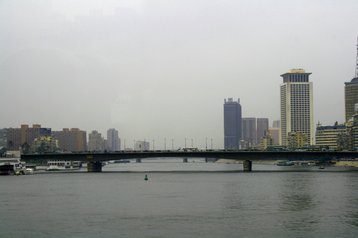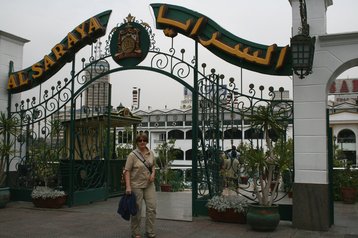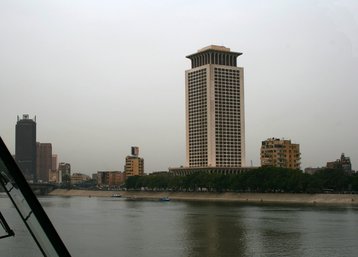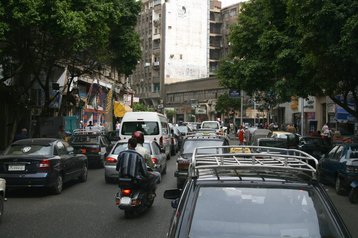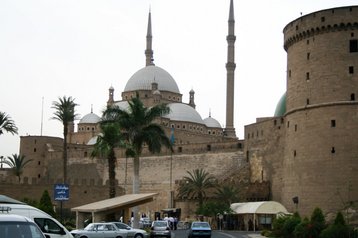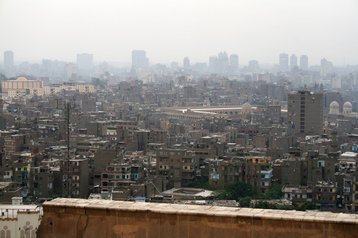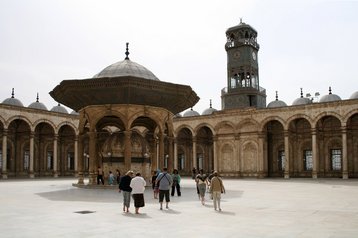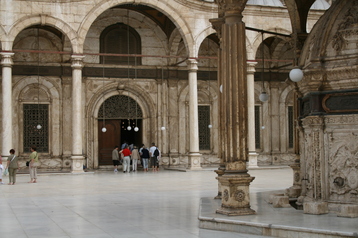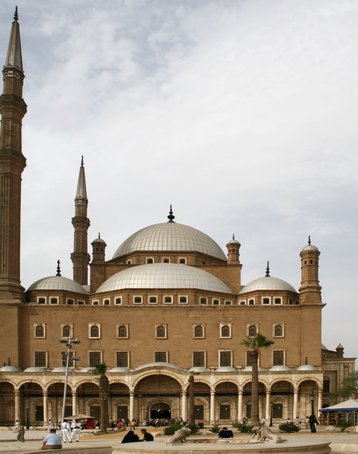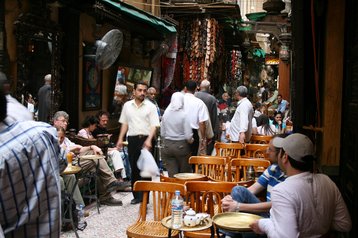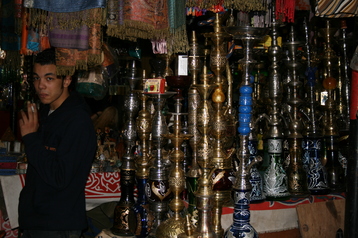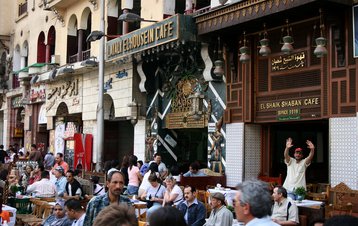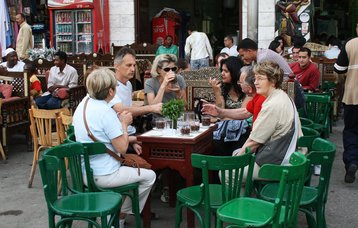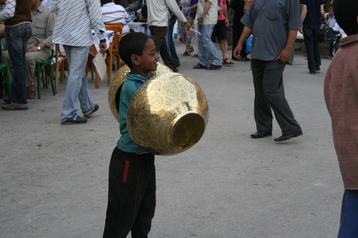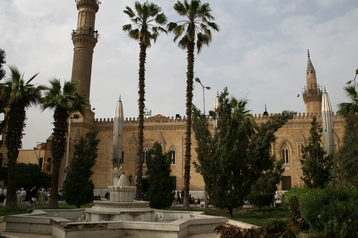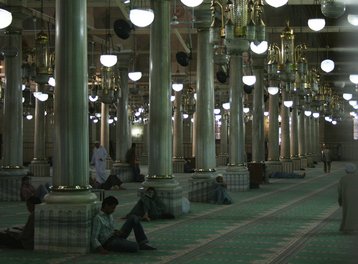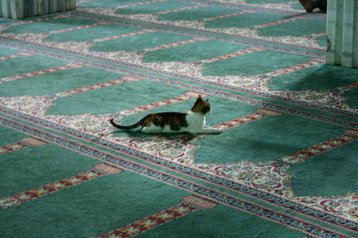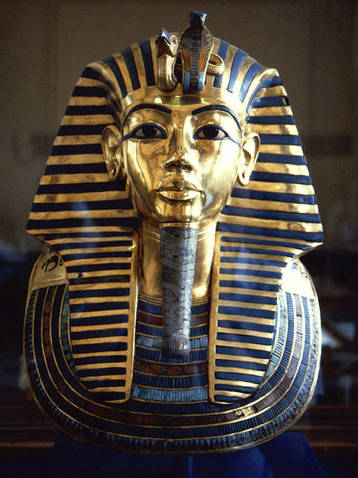
[Image from Wikipedia Commons]
We were also very impressed by a large hall dedicated to statues and other objects from the reign of the pharaoh Akhenaton.
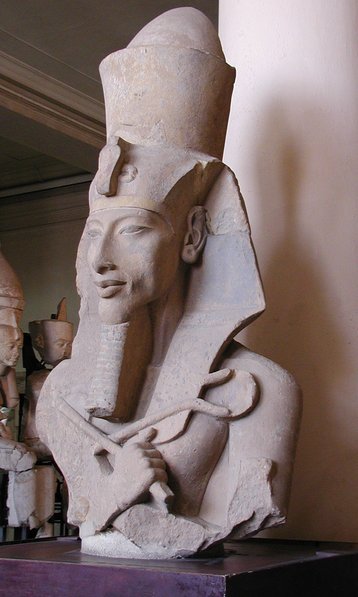
Bust of the pharaoh Akhenaton
[Image from Wikipedia Commons]
The representations of Akhenaton
are the strangest in the museum -- and of all that we saw of Egyptian
art. The pharaoh is depicted with a long head, slanted eyes and thick
lips; and with a distended belly, heavy thighs, and ankles so thin one
wonders how they could support his weight. Historians don't seem to be
certain how much the form of the pharaoh is due to a
pathological difformity and how much to the fashion in which he
wanted to be portrayed. It seems to be some of both. In any case, the
result is rather disquieting. This style is supposed to have
liberated Egyptian art from previous dogma. One can see in the
following scene that the queen Nefertiti is represented similarly.
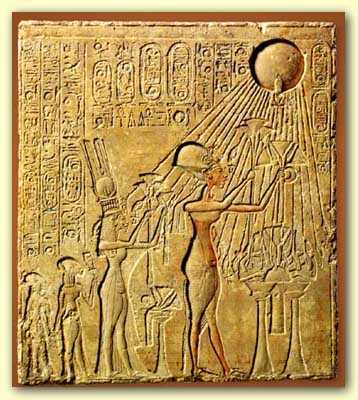
Scene of adoration of the god Aton (the sun) by Akhenaton and his family
[Image from Wikipedia Commons]




